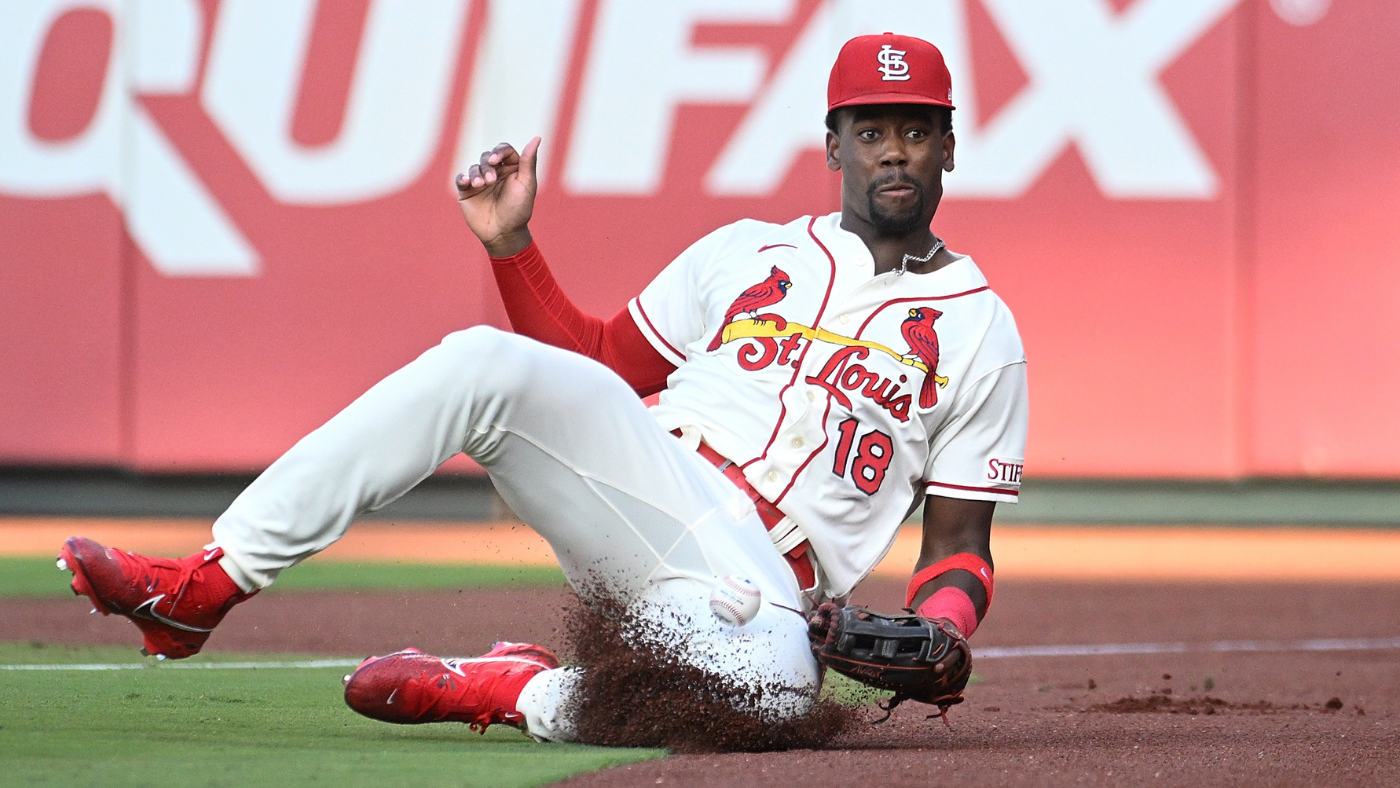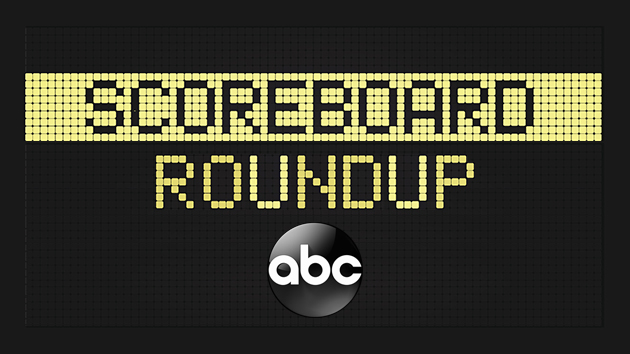Four second-year MLB players with flaws to fix in 2024, including Jordan Walker’s defense
Written by CBS SPORTS ALL RIGHTS RESERVED on January 30, 2024


With spring training just around the corner, it’s that time of the year when it’s socially acceptable to foster unchecked optimism about baseball players and teams. Anything is possible from the day pitchers and catchers report until the season gets underway. After that … well, let’s put it this way: springtime hope requires a certain room setting — one complete with a competitive baseball team — to keep good into the summer months.
If there’s one player type that seems to benefit the most from the collective delusion of the preseason, it’s second-year players.
Experience, and particularly failure, are thought to be great teachers. True rookies, those debuting in the coming year, don’t have much of either at the big-league level. Veterans, meanwhile, have too much under their belts to believe they can make substantive leaps (though it does happen on occasion).
Second-year players though? They’re in the proverbial sweet spot. They’ve seen what works (and better yet what doesn’t) against top-flight competition, and now it’s up to them to make the necessary gains to hold serve or improve. It doesn’t always work out that cleanly — baseball is a difficult sport even for the best of the best– but it did get us thinking about second-year players who could benefit from addressing some obvious holes in their game.
Below, then, we’ve put the spotlight on four in particular who we think are worth watching this year, if only to see if they can address their flaws in a meaningful way. (Do note the players are presented in alphabetical order.)
1. Taj Bradley, RHP, Rays
Improvement area: Home-run proneness
Bradley was pushed into big-league duty sooner than expected last season by the Rays’ never-ending collection of rotation injuries. He compiled a 5.59 ERA (75 ERA+) in 104 innings, with his main issue being the long ball; if you round up, he was one of nine pitchers to surrender two or more per nine. To his credit, Bradley, 22, recorded the highest strikeout rate of the group, punching out more than 11 batters per nine innings.
That last part is important to note since there’s always some question as to whether an extreme home-run rate is the function of a skill deficiency or random fluctuation. For example, in 2022 there was a pair of pitchers who gave up more than two home runs per nine: Josiah Gray and Yusei Kikuchi. Both saw their homer rates drop below 1.50 per nine in 2023. Did they both make huge strides, or did they just have a little worse luck than usual in 2022? You can reach your own conclusions, but the “xFIP” metric exists for a reason.
Anyway, we think Bradley should be just fine without making massive tweaks to his game. He has an above-average arsenal, and he amassed an impressive 3.31 strikeout-to-walk ratio by pounding the zone. (Some 65% of his pitches went for strikes.) That combination bodes well for his chances of turning into a mid-rotation starter in due time.
We do feel obligated to note that Bradley’s quality of contact measures weren’t great in 2023. It would be reasonable to look at those marks and wonder if he’ll continue to be more home-run-prone than the average bear. At minimum, we think there’s enough room for him to settle between last year’s home-run rate and a league-average one to post what could be a breakout effort in 2024.
2. Brenton Doyle, CF, Rockies
Improvement area: Contact
There used to be a running joke about how this or that defensive wizard just didn’t hit well enough to win whenever they would be snubbed for a Gold Glove Award. Doyle tested the limits of that “joke” last season, deservedly claiming the hardware despite an abysmal showing at the plate. He batted .203/.250/.343 (52 OPS+) with nearly seven times as many strikeouts as walks. Bear in mind, he did that while playing his home games at Coors Field, of all places, making him one of the least productive regulars in the league on a park-adjusted basis.
It may seem absurd to pinpoint one offensive area for Doyle to work on — he ranked in the 30th percentile or worse in exit velocity, chase and whiff rates, and so on, suggesting every component of his game could use tweaking. But, rather than be glib, we decided to focus on his contact chops in particular.
Doyle is fast and he’s never going to hit for a lot of power, so the best thing he could do is turn into a slap hitter who leverages his wheels and Coors Field’s spacious dimensions. Obviously it’s not that straightforward — if it were, Doyle would have already made the necessary tweaks — but, on the bright side, his defense and baserunning provide him with a wide berth to continue experimenting with ways to become less of a negative at the plate.
3. Nolan Schanuel, 1B, Angels
Improvement area: Power
Schanuel deserves credit for holding his own at the big-league level despite debuting barely a month after he was drafted out of Florida Atlantic University. He batted .275/.402/.330 with more walks than strikeouts in 29 games. He showed appreciable contact and on-base skills, posting chase and whiff rates that were each more than a handful of percentage points better than average.
The catch is Schanuel displayed bottom-shelf power. He notched one home run and four total extra-base hits, resulting in a slugging percentage that would have been the lowest among qualified first basemen by more than 30 points. His lack of thump extended beyond his raw statline. Schanuel’s average exit velocity was 85 mph and he maxed out at 103.5 mph — the latter measure is arguably more important in this case, where the question isn’t about consistency but, rather, the ability to hit the ball hard at all. For reference, Tony Kemp had the lowest max EV in the majors last season, at 103 mph.
Schanuel’s slugging capacity has been a point of contention among evaluators since his amateur days. While he homered 35 times over his final two seasons with the Owls, his critics noted that his exit velocity readings were never impressive for a collegiate first baseman. Some of Schanuel’s boosters pushed back on that by arguing that the FAU data set was incomplete, and that the eye test suggested he had more power than those numbers indicated. At least so far, the camp that was skeptical of his strength seems to have been correct.
Given Schanuel’s unusual development arc — again, he went from playing in Conference USA to playing in MLB at a blinding pace — it’s worth granting him more time. The risk here, though, is that he ends up providing little punch at a position that demands it.
4. Jordan Walker, OF, Cardinals
Improvement area: Defense
Let’s be clear: Walker’s job is to hit. The path of his career will be dictated far more by what he does in the batter’s box — namely, if he can tap into his impressive raw power more often — than anything that happens in the outfield. Such is the luxury of being a potential future home-run champion.
Still, we think Walker can fare better on the grass than he did last year, when he ranked near the bottom of the majors in Statcast’s Outs Above Average metric — and that’s not just among outfielders, but everyone who played a position. Walker is on the larger side at 6-foot-6, yet he’s not immobile; he even ranked in the 81st percentile in sprint speed.
Despite that, you can understand Walker’s poor defensive grade if you revisit some of his lowlights. At times he was indecisive, resulting in a few too many balls dropping in front of him or eluding his best attempts to corral them on their way to the wall.
To be fair to Walker, he was in his first full season of playing the outfield, having previously served as a third baseman dating back to his prep days. We don’t think anyone will confuse him for a Gold Glove Award winner, but we suspect that more experience should help him smooth out some of his issues.
The post Four second-year MLB players with flaws to fix in 2024, including Jordan Walker’s defense first appeared on CBS Sports.






